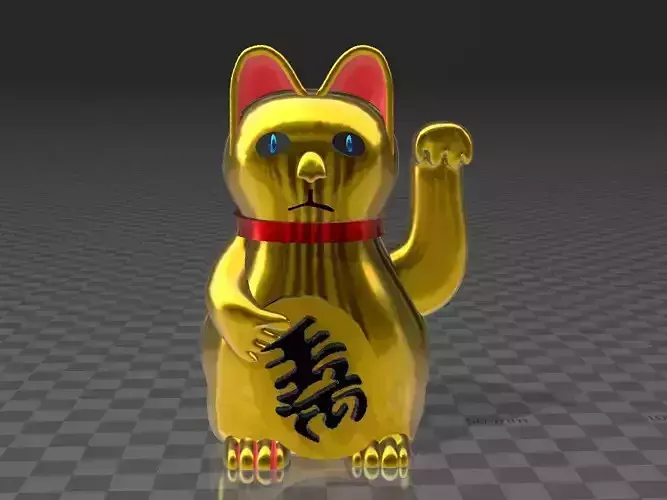1/34
The maneki-neko (招き猫, lit. 'beckoning cat') is a common Japanese figurine which is often believed to bring good luck to the ownerManeki-neko are traditionally depicted seated, holding a koban coin, with one paw raised in a beckoning gesture
Maneki-neko are traditionally depicted seated, holding a koban coin, with one paw raised in a beckoning gesture. To some Westerners (Italians, Spaniards and Greeks are notable exceptions) it may seem as if the maneki-neko is waving rather than beckoning.[1][2] This is due to the difference in gestures and body language recognized by some Westerners and the Japanese. The Japanese beckoning gesture is made by holding up the hand, palm down, and repeatedly folding the fingers down and back, thus the cat's appearance. Some maneki-neko made specifically for some Western markets will have the cat's paw facing upwards, in a beckoning gesture that is more familiar to most Westerners.[3]
Maneki-neko can be found with either the right or left paw raised (and sometimes both). The significance of the right and left raised paw differs with time and place.[4] A statue with the left paw raised is to get more customers, while the right paw raised is to get more money. Hence it is also said that the one with left paw is for business and the right is for home.[5]
Battery- and solar-powered maneki-neko are a modern iteration
t is commonly believed that maneki-neko originated in Tokyo (then named Edo), while some insist it was Kyoto.[4] Maneki-neko first appeared during the later part of the Edo period in Japan.[4] The earliest records of maneki-neko appear in the Bukō nenpyō's (a chronology of Edo) entry dated 1852. Utagawa Hiroshige's ukiyo-e Joruri-machi Hanka no zu, painted also in 1852, depicts the Marushime-neko, a variation of maneki-neko, being sold at Senso temple, Tokyo. In 1876, during the Meiji era, it was mentioned in a newspaper article, and there is evidence that kimono-clad maneki-neko were distributed at a shrine in Osaka during this time. A 1902 advertisement for maneki-neko indicates that by the turn of the century they were popular.[6] Beyond this the exact origins of maneki-neko are uncertain.
REVIEWS & COMMENTS
accuracy, and usability.


































